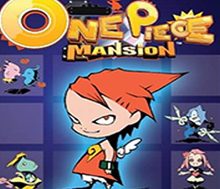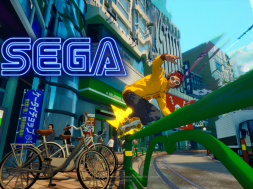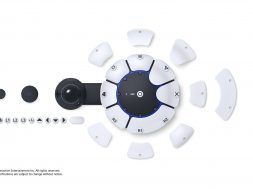

Title: One Piece Mansion
Genre: Puzzle, strategy
Platform: PlayStation 1
Developer: Capcom
Publisher: Capcom
Release Date: November 16th 2001
There are games that are possessed of ingenue, a vital spark of originality that perfectly balance the important elements of innovation and accessibility. They’re at the centre of all great games; Tetris’ ultra-simplistic puzzling, Tekken’s finely-honed yet intuitive combat system, GTA’s rama-lama crime-spree fantasy fodder, the list goes on. And then there are games that are, for lack of a better term, what the Internet might call Bat Fuck Insane. Great concepts, wonderfully executed, but so utterly out of left field as to be somewhat obfuscating, at least to begin with. We could bust out all the cliches about them crazy Japs and their mental games, but that would be sinfully lazy and an injustice to games like Capcom’s PS1 twilight-era puzzler, One Piece Mansion.
The objective of the game is build an apartment block and run it harmoniously, keeping the right configuration of tenants on the right floors so as not to stress them out (lest they explode, taking their rooms with them), or expose them to the criminals that invariably move themselves in and wreak havoc. The mechanics are simply joyous: flipping frantically between the strategic Manager mode, in which you build rooms, lease them to tenants and extend your block’s elevator system, and Security mode, where your 2D avatar navigates the halls of your block, side-scrolling-styley, apprehending the crims that terrorise your tenants and putting out fires that the baddies start. Meanwhile, amid all this, money is a factor: switching tenants’ rooms around costs money, moving people in is a loss until their rent comes in (monthly) and losing a room to exploding tenants is a large loss to recoup, and one that could throw your game off if you’re not careful.
So far, so bonkers. Right? Wrong.
The game modes are even more bizarre to say the least. Though on paper very pedestrian, offering a story mode and an “infinite” mode, there is, in typical manner for this game, a whole lot more than meets the eye. Keeping up the theme of general insanity, the story behind the game goes that a young lad running an apartment block winds up putting his work ahead of hanging out with his sister. As you do. But when aliens, seeing that aforementioned apartment block is too full of residents and is therefore objectionable to aliens for some reason, kidnap the protagonist’s sister pending the completion of seven stages, usually centred around various building-related goals. Final Fantasy VII it ain’t, folks, but it’s a tremendous introduction to the mechanics of the game, and provides a steady learning curve that takes the initial nerves out of familiarising yourself with the game.
 Then there’s Infinite mode, which is where the replay value really comes in. Taking your newfound skills in property management and security, the onus is on you to build an apartment block as high as you can, while of course balancing everyone’s tempers, bearing in mind fiscal prudence and keeping the block relatively trouble-free. Like all the good puzzle games, the game lulls you into a false sense of security and before you know it, a Jenga-style balancing act takes place, frantic and ever more quickly moving between business dealings, the advancement of your building, and private security. It’s bananas, completely but it works so well you’ll barely find yourself pausing for thought.
Then there’s Infinite mode, which is where the replay value really comes in. Taking your newfound skills in property management and security, the onus is on you to build an apartment block as high as you can, while of course balancing everyone’s tempers, bearing in mind fiscal prudence and keeping the block relatively trouble-free. Like all the good puzzle games, the game lulls you into a false sense of security and before you know it, a Jenga-style balancing act takes place, frantic and ever more quickly moving between business dealings, the advancement of your building, and private security. It’s bananas, completely but it works so well you’ll barely find yourself pausing for thought.
Now, all this would be nothing but jolly japes at best, or at worst a total mess, without a decent control system underneath it all. This is where Capcom’s Midas touch comes in: it’s as accessible and pleasing as any of the puzzle classics: Triangle switches between management and security, Security merely requires directional buttons and Square for an action button, while Management works in a simplistic grid format. Hover over a room or empty space, press X and a simple menu shows up, offering you tenants to bring in, the ability to switch rooms and of course, to duck back into Security mode for more Elevator Action-esque shenanigans. It’s beautiful in its simplicity, and devastating in its effectiveness.
 As with most Capcom games, the delivery is nothing short of gold, with bold, colourful 2D graphics neither erring on the side of weeaboo-baiting kawaii antics or in the realms of stock strategy game seriousness. The cast of tenants are a genuinely charming lot as well, ranging from old dearies and underachieving students to highly-strung ninja and mid-training sumo, and each one’s own quirks and foibles add a new dimension to the game as you frantically line them up for as much compatibility as possible. So they don’t explode.
As with most Capcom games, the delivery is nothing short of gold, with bold, colourful 2D graphics neither erring on the side of weeaboo-baiting kawaii antics or in the realms of stock strategy game seriousness. The cast of tenants are a genuinely charming lot as well, ranging from old dearies and underachieving students to highly-strung ninja and mid-training sumo, and each one’s own quirks and foibles add a new dimension to the game as you frantically line them up for as much compatibility as possible. So they don’t explode.
It’s a brilliant little package that shamefully got overlooked as PlayStation began its journey to retro Byzantium: by 2001, PS2s were beginning to nestle under tellies around the country and grey boxes everywhere got handed down to younger brothers and sisters, meaning that the greatest console of the modern era ended in a hail of Japanese budget-range ports and license-house cash-cows. But that’s a debate for another week. The simple fact of the matter is that this is one of the best titles you probably don’t have for the 90s pop-culture wonderbox. You should probably sort that out with a quick sojourn to eBay because it’s well worth the hassle.
[Words, Mike McGrath-Bryan]
Editor-in-Chief, part-time super villain and hoarder of cats. If you can’t find me writing, I’m probably in the kitchen!











